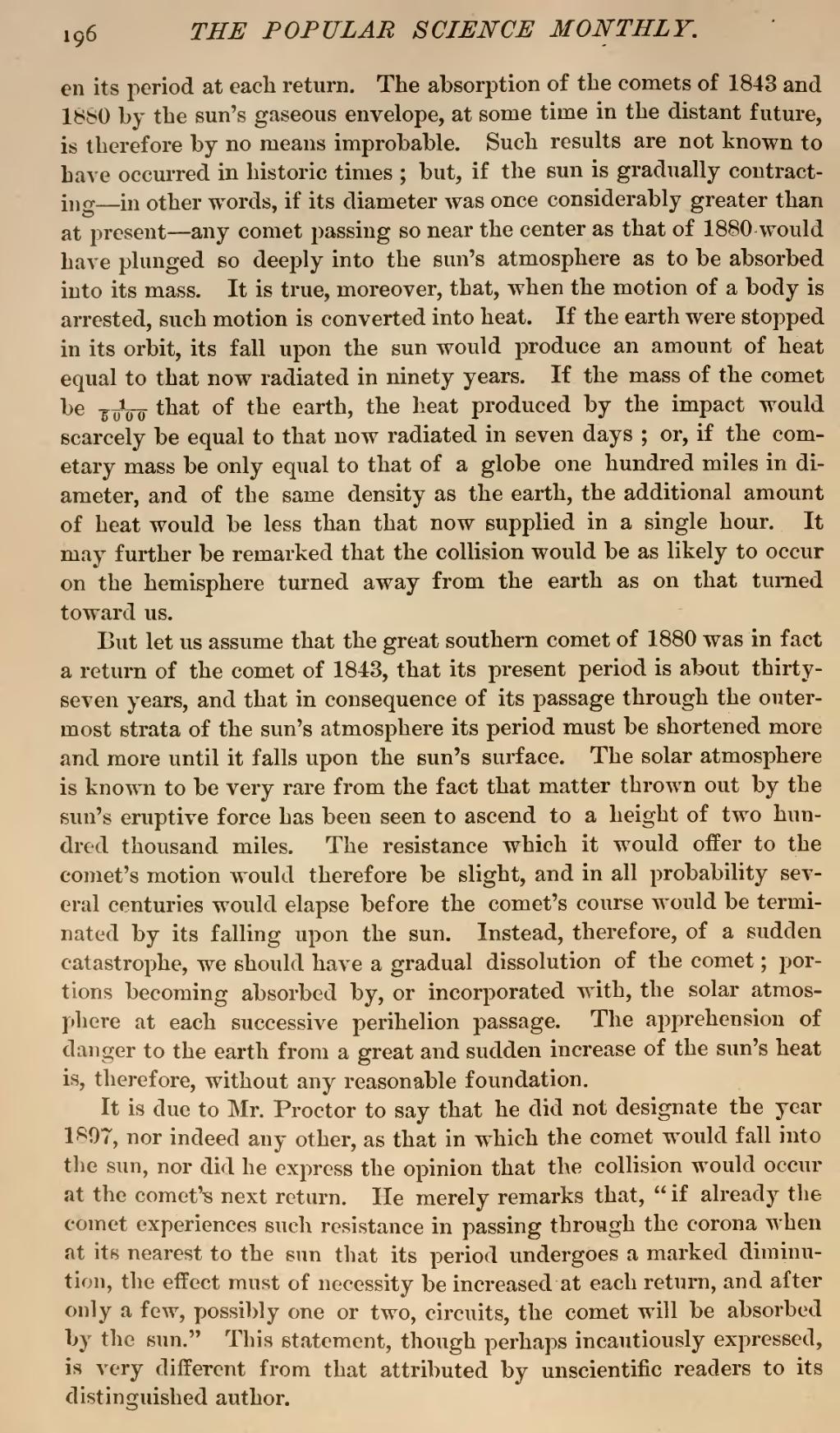en its period at each return. The absorption of the comets of 1843 and 1850 by the sun's gaseous envelope, at some time in the distant future, is therefore by no means improbable. Such results are not known to have occurred in historic times; but, if the sun is gradually contracting—in other words, if its diameter was once considerably greater than at present—any comet passing so near the center as that of 1880 would have plunged so deeply into the sun's atmosphere as to be absorbed into its mass. It is true, moreover, that, when the motion of a body is arrested, such motion is converted into heat. If the earth were stopped in its orbit, its fall upon the sun would produce an amount of heat equal to that now radiated in ninety years. If the mass of the comet be 1/5000 that of the earth, the heat produced by the impact would scarcely be equal to that now radiated in seven days; or, if the cometary mass be only equal to that of a globe one hundred miles in diameter, and of the same density as the earth, the additional amount of heat would be less than that now supplied in a single hour. It may further be remarked that the collision would be as likely to occur on the hemisphere turned away from the earth as on that turned toward us.
But let us assume that the great southern comet of 1880 was in fact a return of the comet of 1843, that its present period is about thirty-seven years, and that in consequence of its passage through the outer-most strata of the sun's atmosphere its period must be shortened more and more until it falls upon the sun's surface. The solar atmosphere is known to be very rare from the fact that matter thrown out by the sun's eruptive force has been seen to ascend to a height of two hundred thousand miles. The resistance which it would offer to the comet's motion would therefore be slight, and in all probability several centuries would elapse before the comet's course would be terminated by its falling upon the sun. Instead, therefore, of a sudden catastrophe, we should have a gradual dissolution of the comet; portions becoming absorbed by, or incorporated with, the solar atmosphere at each successive perihelion passage. The apprehension of danger to the earth from a great and sudden increase of the sun's heat is, therefore, without any reasonable foundation.
It is due to Mr. Proctor to say that he did not designate the year 1897, nor indeed any other, as that in which the comet would fall into the sun, nor did he express the opinion that the collision would occur at the cornet's next return. He merely remarks that, "if already the comet experiences such resistance in passing through the corona when at its nearest to the sun that its period undergoes a marked diminution, the effect must of necessity be increased at each return, and after only a few, possibly one or two, circuits, the comet will be absorbed by the sun." This statement, though perhaps incautiously expressed, is very different from that attributed by unscientific readers to its distinguished author.

